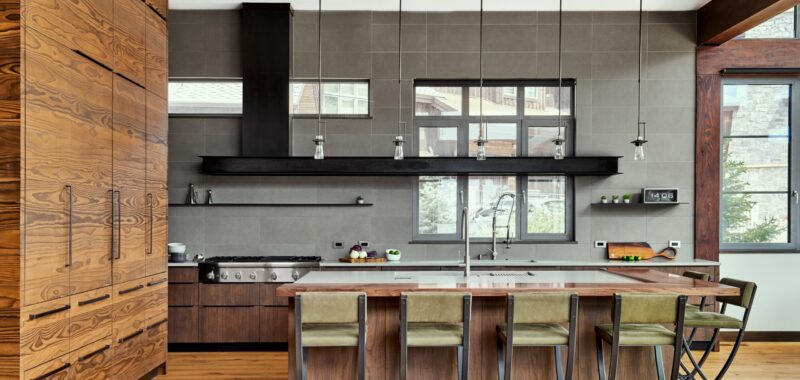If you covet that minimalist industrial kitchen look, consider this your metal master class (and ditto for exposed beams and bricks, plenty of blacks and grays, and a less-is-more design approach). “Industrial design is form and function at its core,” says Sara Cukerbaum, principal designer of Slic, an Austin-based design firm. “It takes from surrounding architecture and materials, and only contributes details to the space that make it work for its current use.”
Naturally, industrial kitchens follow a more pared-down aesthetic, but that doesn’t mean they need to be cold and uninviting. Whether through wood accents or bathing a space in natural light (hello, oversized windows), there are lots of ways to add welcoming energy to even the most sparsely decorated industrial kitchens.
Ahead, 16 industrial kitchen ideas that will delight even the staunchest of farmhouse kitchen fans. Plus, designer tips for each of the industrial-design-inspired kitchens to pull off its distinct blend of style and utility in your own space.
What are some general design principles for industrial kitchens?
Industrial kitchens get their inspiration from commercial or restaurant kitchens. Some industrial kitchen elements also give a nod to factory design elements from yesteryear, such as oversized window panels with steel mullions.
Joyce Huston, lead interior designer and cofounder at Decorilla, an online interior design company based in New York City, likens designing an industrial kitchen to cooking without a recipe; “it is all about balance and instinct,” she says, of achieving that “raw and edgy vibe” without making the space feel like you are eating at a factory. In general, Cukerbaum similarly stresses that you shouldn’t “overthink or fight what the space already has.” Another good rule of thumb for industrial design? Don’t be afraid to leave appliances exposed, says Cukerbaum. In some cases statement-making appliances may even serve as a focal point in the space.
The most common mistakes Huston has seen are going super metal crazy or forgetting to add warmth elements to the final design plans of an industrial kitchen. “Trust me, nobody wants to have a cup of coffee in a steel box,” she says. (Lighting is also essential, Huston believes; as “big and bold fixtures can make or break the space.”)
In her experience, Huston has found that the secret to designing a lovely industrial kitchen is mixing it up without going overboard. “I like to blend exposed brick with weathered wood, add some vintage finds and keep the appliances sleep,” she says. “It’s all about creating a story, not just a look.”
What materials should I use when designing an industrial kitchen?
Andrew Pharis, architect and interior designer with Vertical Arts Architecture, based in Denver, calls the material palette “everything” when it comes to achieving an industrial aesthetic in a kitchen. While there are no hard-and-fast rules for what kind of materials you should use when following this design framework, Pharis says to focus on layering with raw, natural materials. For instance, you can balance out rich wood cabinetry with a steel hood for a delightful pop of contrast. Expanding on that sentiment, Cukerbaum says that minimalism in industrial kitchens allows the focus to stay on whatever the space’s existing palette is, say, wood and brick.
What kind of cabinets work best in an industrial kitchen?
Cukerbaum sums it up best when she comments that less is more and functionality rules on the industrial kitchen front. Accordingly, “for an industrial kitchen, keep the cabinetry understated,” Pharis elaborates. Plus, reducing the amount of cabinetry can help the space feel larger and rawer. When in doubt when laying out the floor plan for your industrial-inspired kitchen, go for fewer design elements that pack a bigger punch. This will prevent your home’s hearth from feeling cluttered and smaller than it is.

